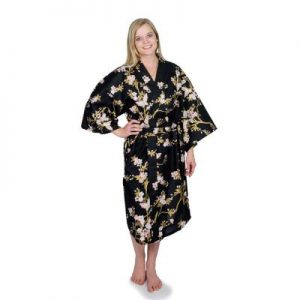The Graceful Symbolism of Butterflies
Butterflies have a profound place in the hearts and minds of many cultures, with their delicate wings and graceful flight capturing the imagination. In Japanese culture, butterflies are more than just beautiful insects; they are rich with symbolism and meaning, especially in traditional attire like kimono and yukata.
Butterfly Symbolism in Japanese Culture
In Japan, butterflies symbolize various aspects of life, love, and spirituality:
- Transformation and Rebirth: Much like in many other cultures, butterflies in Japan are seen as symbols of transformation and rebirth. Their metamorphosis from caterpillar to butterfly beautifully represents personal growth, change, and the cyclical nature of life.
- Beauty and Elegance: The butterfly’s delicate wings and graceful flight are often associated with feminine beauty and elegance. This symbolism is prominently featured in traditional Japanese clothing, where butterfly patterns enhance the aesthetics of kimono and yukata.
- Ephemeral Nature of Life: In Japanese philosophy, the fleeting beauty of the butterfly is a poignant reminder of the transient nature of life. This concept, known as “Mono no Aware,” reflects an awareness of the impermanence of all things, urging people to appreciate the beauty of the present moment.
- Love and Marital Bliss: Butterflies often symbolize love and marital happiness. A pair of butterflies dancing together is seen as a symbol of harmonious marriage and romantic love, making it a popular motif in wedding kimonos and other celebratory garments.
Kimono and Yukata Patterns
Traditional Japanese garments like kimono and yukata frequently feature butterfly patterns that carry deep symbolic meanings:
- Kimono: The elaborate designs of kimono often include butterflies, adding an element of grace and beauty. These patterns can symbolize a variety of themes, from romantic love to personal growth, and are chosen carefully for specific occasions.
- Yukata: Lighter and more casual than kimono, yukata also showcase butterfly motifs, especially during the summer festival season. The presence of butterflies on yukata emphasizes a carefree, joyful spirit and a connection to nature.
- Loungewear: Modern adaptations of traditional Japanese loungewear often incorporate butterfly designs, blending comfort with cultural symbolism. These pieces are perfect for those who appreciate the elegance and beauty of Japanese artistry in their everyday lives.
The Significance of Butterfly Symbolism Today
While the traditional meanings behind butterfly symbolism have deep roots, they continue to resonate in contemporary Japanese culture. From fashion to art, the butterfly remains a powerful symbol of beauty, transformation, and the fleeting nature of existence. Whether you’re a kimono lover, a Japanese culture enthusiast, or simply someone who appreciates the intricate beauty of this elegant insect, understanding the symbolism of butterflies can enrich your appreciation of Japanese art and tradition.
Conclusion
Butterflies hold a special place in Japanese culture, symbolizing everything from personal transformation to romantic love and the ephemeral beauty of life. Their presence in kimono and yukata patterns not only adds aesthetic appeal but also conveys deep cultural meanings.
Ready to explore these beautiful designs further? Discover our curated collection of butterfly-themed kimono and yukata, and bring a touch of Japanese elegance into your wardrobe.
Explore Our Collection and find the perfect piece that resonates with your personal style and the timeless beauty of butterfly symbolism.
Tags: butterfly kimono, kimono yukata, what do butterflies symbolize








